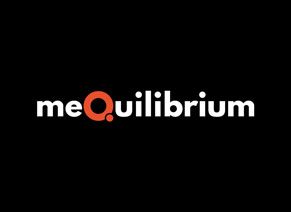What does it take to be courageous?
Courage isn’t a gene or trait, and it’s much more than a single act of bravery. The truth is, courage is a key capacity that helps us overcome everyday challenges, and it’s something you already have.
meQuilibrium Chief Science Officer Dr. Andrew Shatté has broken courage down into four dimensions: physical, social, moral, and creative—each one driving your impact from the inside-out. When we build these four capacities, he says, we expand our potential to grow, improve, and innovate, not to mention boost our resilience and possibly even increase our life span.
It’s time to get courageous! Get started by using this guide to build each type of courage and harness your full potential:
1. Physical Courage: Embrace Challenge
When your brain enters a threat state, your amygdala triggers your fight-or-flight response and you feel the physical effects: Your heart rate and breathing usually quicken, your palms might start to sweat, and your decision-making is often impaired. This is your body’s attempt to outrun threat. But physical courage is about rising to the occasion, not running from it. That means transitioning into what’s called a “challenge state,” where you’re prepared to tackle the challenge head-on.
Build It: How? Visualize your success. Your brain has an inner GPS (called the reticular activating system) that directs you where you want to go. When you picture yourself slipping up on a presentation, for example, you’re directing your attention to negative outcomes. Instead, take five minutes to envision yourself crushing the presentation with as much detail as you can. Imagine the positive feedback you’ll receive and the pride you’ll feel. One study on task-specific visualization showed that it made participants a full 23 percent more successful because it filters out negativity; so instead of mitigating disaster, you’re calibrating for success.
2. Social Courage: Get Connected
We all fear rejection. One study by the University of California showed that rejection activates the same region of your brain that gets triggered by physical pain. That’s why one of the most courageous social acts is vulnerability, being truly open and authentic with others. And it’s worth it: Vulnerability deepens our social connections, which in turn boosts our resilience to stress and helps us live fuller lives.
Build It: It can be as simple as checking in with yourself before giving an automatic smile and polite answer when someone asks how you’re doing. Equally as important: Authentically supporting others. Now, this doesn’t mean blindly agreeing with others’ ideas, says Shatté, but it does mean respecting their differences and truly hearing them out.
3. Moral Courage: Think For Yourself
Moral courage involves standing up for what you believe. This is easier said than done. One famous psychology study on conformity found that when pressured, 75 percent of participants conformed at least once to an obviously incorrect belief. This kind of groupthink undermines innovation and progress.
Build It: Use your values as due North. Maybe you notice that peoples’ viewpoints aren’t being equally heard on your team, and fairness is a value you hold close. Bring that person into the conversation by actively asking for their viewpoint and including their perspective, says Shatté. Acting on your values is a true expression of what you stand for and could even inspire others to do the same.
4. Creative Courage: Shake Things Up
Creative courage is having the bravery to think outside the box and create something new. Why? Because it goes against our natural wiring to avoid risk. To break this fear barrier, we need to reframe failure.
Build It: Start with low-stakes risks: Take a different route to work, strike up a conversation with your barista or neighbor, speak up during a meeting, or explore a new podcast topic. If it doesn’t go well, lean into your growth mindset: Encourage yourself to try again, and reward yourself for trying in the first place. Frame the attempt as “a work in progress” rather than a “failure,” and risk will become less intimidating—making you more courageous—in the future.
